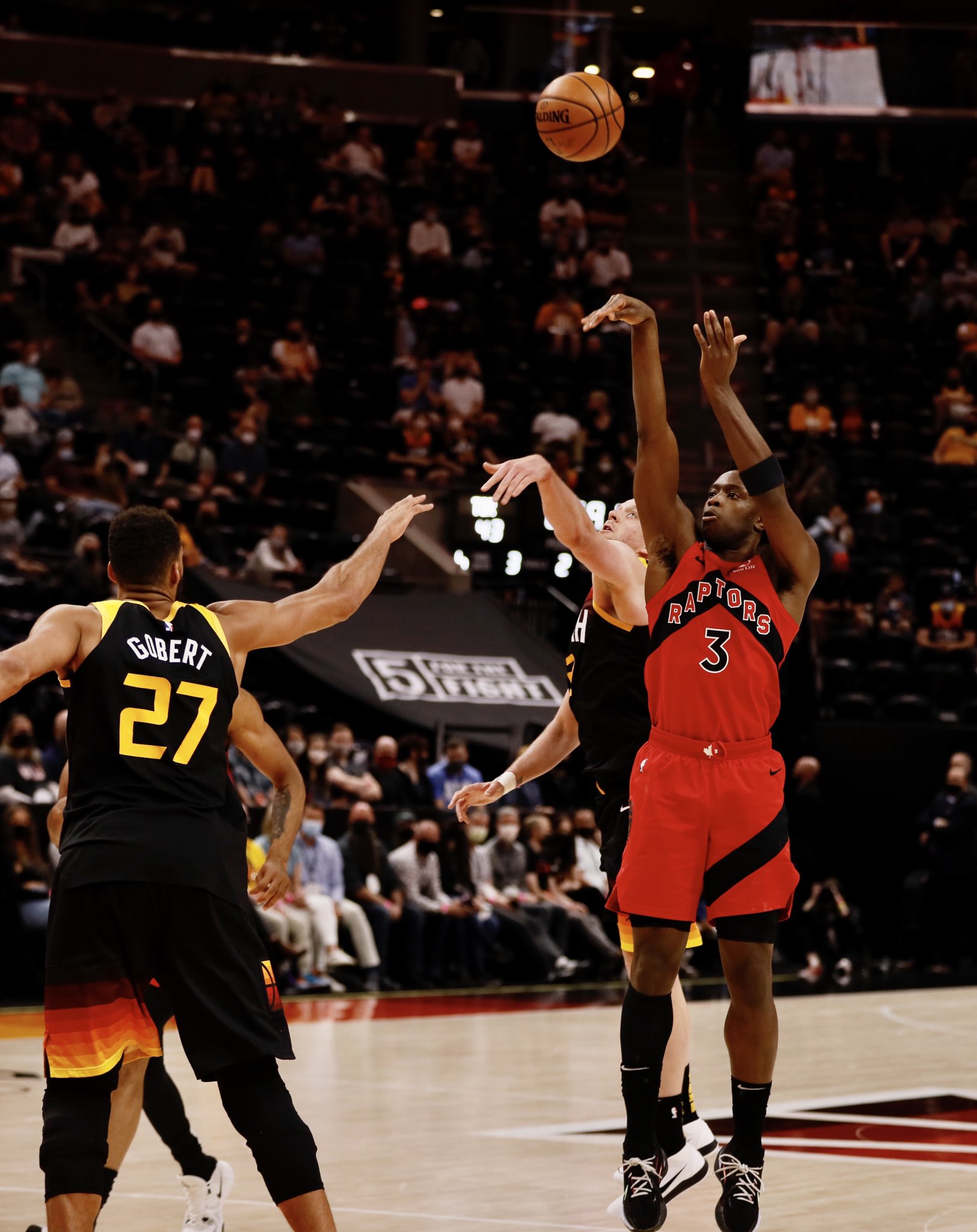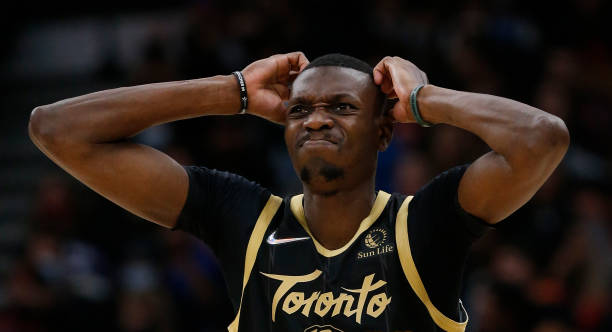When Nick Nurse was named Head Coach of the Toronto Raptors, he represented a significant stylistic change from previous leader and reigning Head Coach of the Year Dwane Casey. The latter was an old-school coach who believed in pounding the rock so much that he actually found one for the stadium — a 1300-pound boulder. Nurse represented the analytics movement. Before joining the Raptors’ bench as an assistant to Casey, Nurse was the leader of the Rio Grande Valley Vipers in the G League whose incredible pace and rate of 3-point attempts represented an experiment that would soon spread to the NBA.
And Nurse did imprint his system on the Raptors. In 2017-18 when Toronto’s offense was supposedly handed over to Nurse during the “culture reset year,” Toronto’s three-point attempt rate jumped from 26.4 percent, 20th in the league, to 34.8 percent, fifth in the league. In 2019-20, Toronto took 38.9 percent of its shots from behind the arc, and then in 2020-21, that number rose to an incredible 40.6 percent. Toronto’s infatuation with the three-point arc has been a consistent element of the Nurse era.
Until now.
This year, Toronto has taken a miniscule 32.5 percent of its non-garbage time shots from deep, the lowest mark since that 2016-17 season — the one before the culture reset. In terms of league rank, the Raptors are currently 27th, the lowest they’ve been since 2010-11. That’s despite the team retaining so many of its three-point gunners from last year, including Fred VanVleet, OG Anunoby, and Gary Trent jr. This hasn’t exactly been the plan.
“I wouldn’t say we came in [to the season], and our goal was to be shooting about less three-pointers going back four or five years to shooting less three pointers, and we’re doing exactly what we plan to do,” said Nick Nurse.
He offered a variety of explanations when I asked him why the team is shooting so many fewer triples. “I think that the uptick in defensive physicality has cut our numbers down,” he said. “Little bit of [a result of our] personnel, I think as well. And again, I think we’ve had I think some issues offensively here and there. But I think you know most teams go through that a little bit and most of the times for us it’s just been, just lineup uncomfortability. Not being very comfortable with guys, and then we seem to work it out pretty quickly again. So just got to keep kind of working on it. We know the lineup changes a lot in this league for everybody, and we’ve got to be able to adjust better and play the kind [of offense], execute the way we want to no matter who’s out there and who isn’t.”
As usual, Nurse gave plenty of information (including using one of his favourite made-up words in “uncomfortability,” but he didn’t entirely tip his hand and give away the farm. There are a number of reasons why Toronto’s dalliance with the arc seems to be on the rocks, and many of those seem to present as necessary tactical requirements.
All three of Toronto’s leaders in three-point attempts, VanVleet, Anunoby, and Trent are taking a smaller share of shots from behind the arc this season. That’s for different reasons for all of them. For Anunoby, who alone of the three is taking more threes, though like the others is taking a smaller share of his total shots as triples, the decline is because he has taken over plenty of offensive responsibility with Lowry gone. As a result, he is driving more, posting up more, and spending more time as a screener; what those three things have in common is that they take him inside the arc. His performance against the Portland Trail Blazers was a good microcosm; he shot six for eight from deep in the first half and then proceeded to take only two more in the second half. For Trent, the decline is more subtle, but he’s spending more time attacking rotations and taking one-dribble pull-ups, meaning his already sky-high rate of midrange attempts has only increased. For VanVleet, the decline is partially because he’s now the team’s lone point guard, so he runs more pick and rolls, spends more time on the ball, and is asked to create more of his offense in the midrange.
In many ways, those changes have benefited Toronto’s individual players. Anunoby is looking like a future star wing as a result. Trent is scoring more efficiently than last season largely because he’s been so automatic from the midrange. VanVleet’s efficiency is far higher than last season.
For VanVleet especially, the change has been revelatory. It’s not that he was a poor offensive player last year — far from it. But he’s been unleashed this season as the tied-seventh best player in the league, if you go by some single-number metrics. He’s spending far more time in the midrange, taking over a third of his shots there, and making an incredible 46 percent. His ability to be a more threatening scorer with the ball inside of the arc has added to his ability to create for teammates, as well; he’s passing for more attempts two-pointers this year, and teammates are shooting better on such attempts than they were last year. All told, VanVleet’s offensive growth inside the arc has been lifeblood for Toronto’s halfcourt offense.
In other words, Toronto is taking so few triples because that’s what incredibly important members of the team need. In fact, in games in which all three have been available, Toronto has played only 15 minutes without one of the three on the floor — which the team has lost horrifically. (It seems Toronto still needs some minimum of shooting on the floor) There are obvious questions begged — if Toronto requires fewer attempted threes for some of its best players to take steps forward, then the team probably needs a slightly more diverse roster of skills among its personnel. That can come from inside or outside of the roster.
Barnes can’t remain a non-shooter, and the team’s duo of centers can’t both remain non-shooters and inefficient scorers inside the arc. Siakam becoming more efficient inside the arc or bouncing back to becoming a league-average shooter from distance again would be huge helps, and him doing both would probably make the team a real threat to win a round or two in the playoffs. He did both against the Detroit Pistons, when he looked as good or better than he ever has, as well as against the Blazers. So the change can easily come from within the roster. But if none of that happens, in the long-term it’s possible than an optimized offense for Toronto would require a trade. That’s a discussion for the future when some of Toronto’s youngest players show their hands in what types of players the become. For now, this team is already winning a surprising number of games. The offense hasn’t been a major or consistent issue.
Despite Toronto’s seeming departure from the offense that the analytics movement — to which Nurse himself was a huge contributor! — would suggest, Nurse isn’t displeased with the results.
“I don’t want to say I’m ecstatic about the offense, but I’m fairly happy with it,” he admitted.
In other words, Toronto’s offensive shot diet is more or less a good thing. It’s not what they were expecting — “You got your ideas, and you got your philosophies, and you got your vision for the season, but that always takes a different kind of winding road each season,” said Nurse, explaining that this wasn’t really the plan — but they’re okay with it. The decline in threes has allowed VanVleet to thrive, Anunoby to grow. It’s enabled two of Toronto’s best players (and you can also throw Scottie Barnes in as a beneficiary, who has a 0th percentile rate of three-point attempts for his position, yet is playing like a star out of the gate) to become even larger stars.
In a sense, Toronto’s lack of three-point attempts is driven largely by what the team needs. Specifically, this is what VanVleet, Anunoby, and Barnes needed. And the analytics movement is really a way of applying math to answer the question of what winning requires, what a team requires. No smart analytics person would ever say that all teams need the same thing at the same time. Context always matters. And so Nurse and the Raptors aren’t eschewing analytics. They’re just finding a new way to apply it in a unique context. In some ways, in doing so Nurse is reclaiming his rightful place as a leader in the analytics movement by once again doing something that no one expected.



